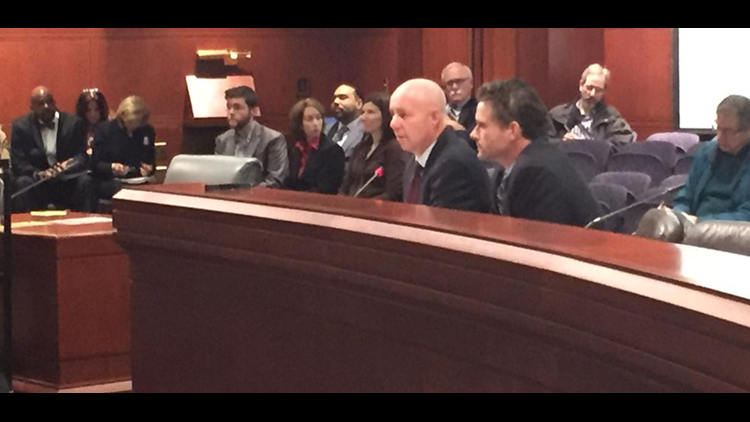HARTFORD – A state racial profiling report released Tuesday found significant disparities for many local police departments. Mike Lawlor, undersecretary for criminal justice policy and planning, spoke before a panel about racial profiling data.
“The findings raise concerns about significant racial disparities in data for 10 police departments and two state police troops,” Lawlor said.
Based on the report, departments found to have significant disparities were Groton Town, Granby, Waterbury, State Police Troop C (Hartford) and State Police Troop H (Tolland).
Other departments were found to have consistent disparities that may indicate presence of racial and ethnic bias. Those were Wethersfield, Hamden, Manchester, New Britain, Stratford, and East Hartford.
Ken Barone, a research specialist on the study, said, “The statistical disparity provides evidence in support of the claim, that certain officers in the state are engaged in racial profiling during daylight hours, when motorists race, and ethnicity is visible.”
The data was collected based on traffic stops in each municipality.
You can see the red markers indicate an area with significant racial disparities. The yellow markers indicate consistent racial disparities that could be a problem.
The report is the first analysis since Connecticut strengthened its anti-racial profiling laws in 2013 with the Alvin W. Penn Act. The changes were in response to a federal investigation into racial profiling by East Haven Police.
“What can we learn from this data to help continue to build relationships between the law enforcement community and the African-American and Latino communities to ensure we continue to reduce crime,” said Lawlor.
Lawlor did note, that no Connecticut town shows the kind of biased treatment seen in Ferguson, Missouri the year before the Michael Brown shooting, which was documented in a state report.
Researchers have reached out to the departments identified and encourage a training program.
David McGuire, staff attorney for the American Civil Liberties Union of CT (ACLU) released a statement on the report.
“You can’t measure what you can’t count. This information confirms that racial bias is a reality on the state’s highways and roads. Now that we can pinpoint problem areas, it is incumbent upon police departments to recognize and correct the bias that is driving many of their traffic stops.
“We are glad that our law enforcement agencies are looking at this. The fact that they are monitoring this information could be the first step to remedying the problem. Now we need trainings for police so that they understand how implicit bias can drive discriminatory behavior.”
State Police Union President Andrew Matthews addressed the report as well:
We take this study seriously. We have zero tolerance for discrimination. That’s not our code, that’s not our office, that’s not how we conduct business, that’s not what the public expects. That’s not how we build the trust.”
The Connecticut Police Chiefs Association also responded, saying in-part, “The CPCA has urged each police chief in the state to review the data presented pertaining to their community.”



